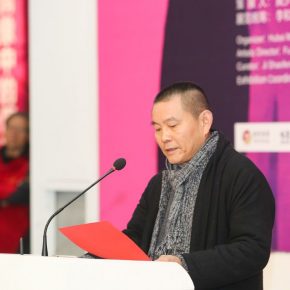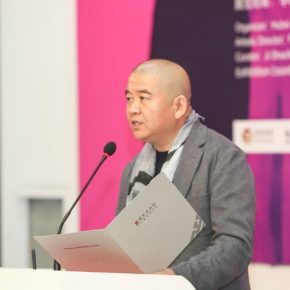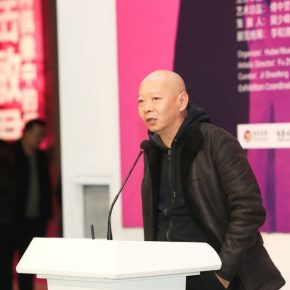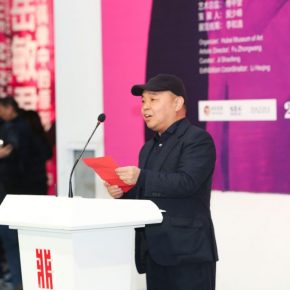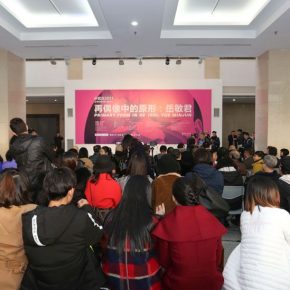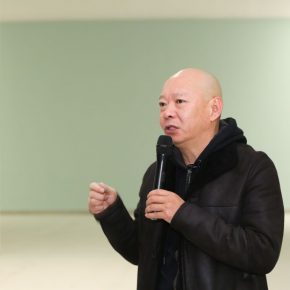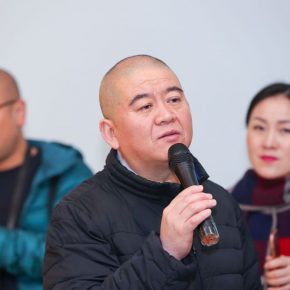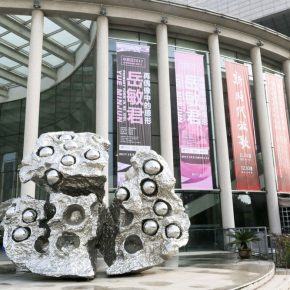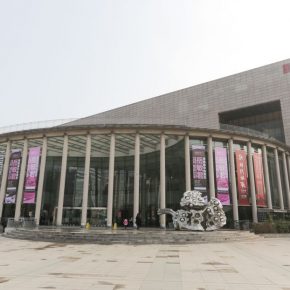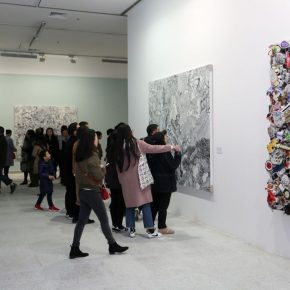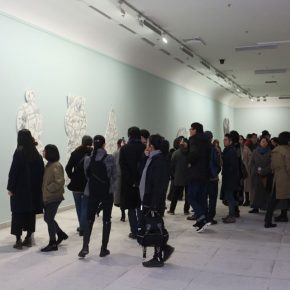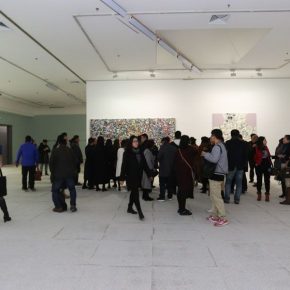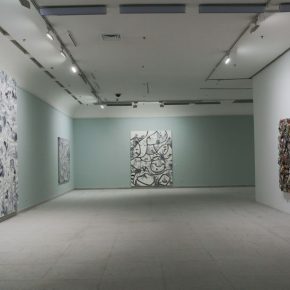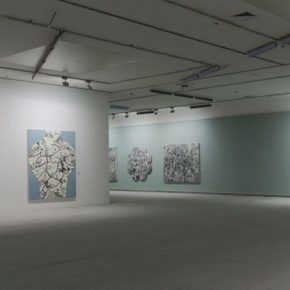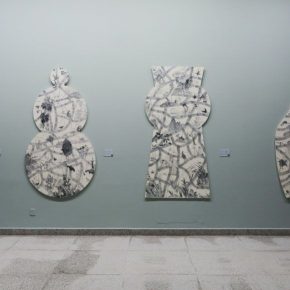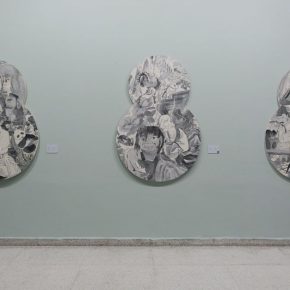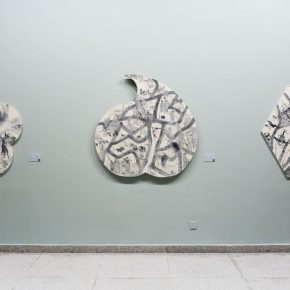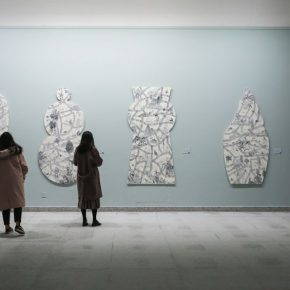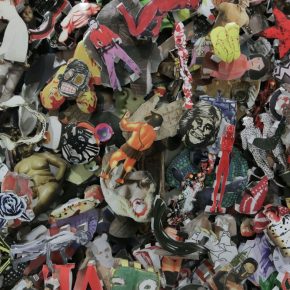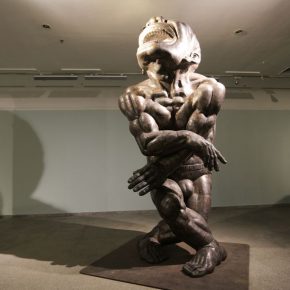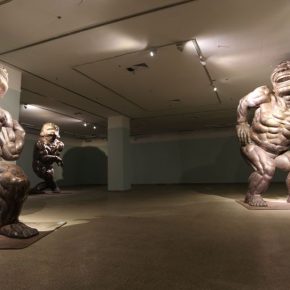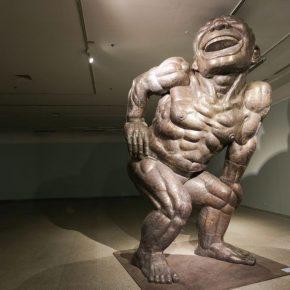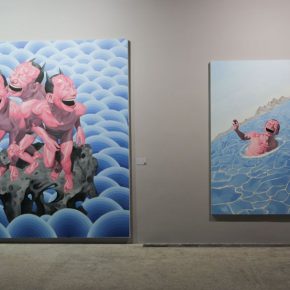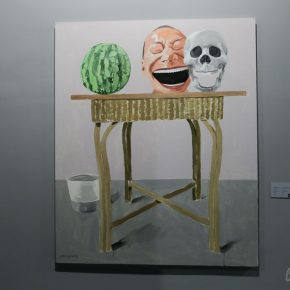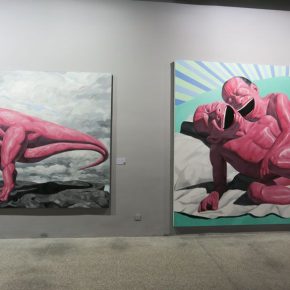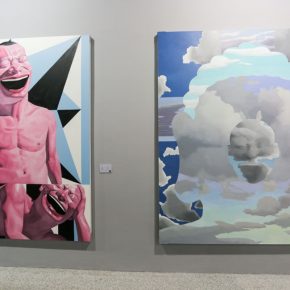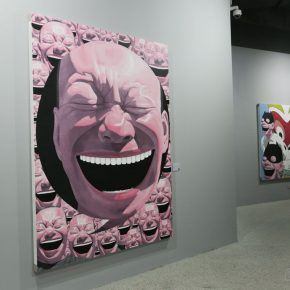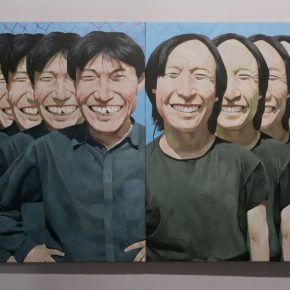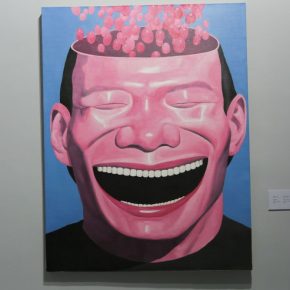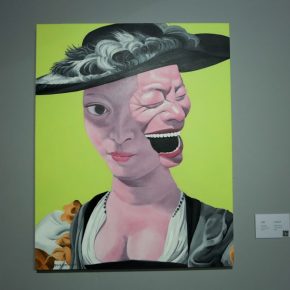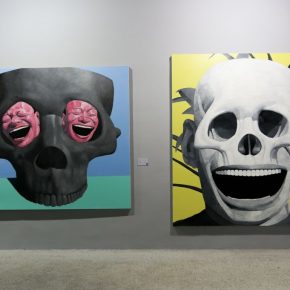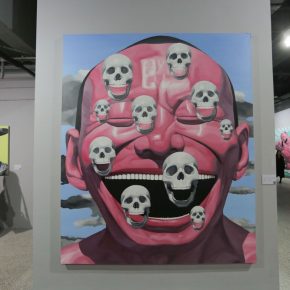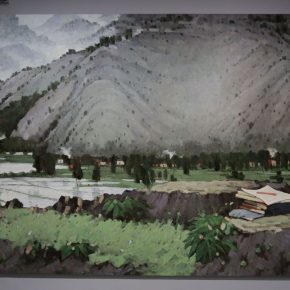
In the course of the development of Chinese contemporary art, it is obvious that Yue Minjun has always had a presence, whether they have created contemporary Chinese art, or contemporary art has chosen the works of these people does not seem to be an important issue now. Since Li Xianting regarded the style of artists such as Yue Minjun as “cynical realism”, which entered international art exhibitions and markets in the 1990s, it has become the representative style of Chinese art. Yue Minjun has also emphasized the profound expressive quality of art and culture in his creative clues, and prompts a relationship with social reality with a firm style and will.
On December 2, 2017, as one of the key exhibitions of the @ Wuhan • 2017 series, Yue Minjun’s exhibition of “Primary Form in Re-Idol” opened at the Hubei Art Museum, having invited Fu Zhongwang to serve as Art Director and Ji Shaofeng as the curator, to present the “Maze”, “Trivial”, “Smile-ism” and “Scene” series of works, to feature Yue Minjun’s meditation on himself and social cultural reality, centered on “the issue of idol” over the years. The artist attempts to answer why he formed such a state at that time, and it is a reflection of the question of “existence”, and the exhibition responds to the “primary form” in the “re-idol”, which also conveys the thinking and exploration behind the creation. As the curator Ji Shaofeng described, Yue Minjun was like his generation, whose personal destiny and the path of artistic expression were undoubtedly closely linked with changes in social structure, while the ups and downs of personal destiny had a relationship with historical changes.
This exhibition is shown in Halls 1, 2, and 3 of the Hubei Art Museum, and the related series of works are presented in different exhibition halls and constructed into a relatively stable narrative structure. Hall 1 features “Maze” series and “Trivial” series, through disassembling and reorganizing the images of traditional culture and popular culture to create a new understanding of the past traditions. The “Maze” series uses the traditional semantic strokes of Chinese characters to separate the screen, to create a maze that is full of complicated passages, and presents the common themes such as literati, rockery, and flowers of the traditional paintings in a variety of small spaces, wholly rendering a surreal aesthetic situation. Rather than the use of the common Western geometric frames, this series of works apply a variety of shaped frames, such as the shapes of plum, gourd, peach, porcelain vase, etc. Yue Minjun introduced this as it was related to the Chinese thinking through specific natural forms to be able to observe and recognize the world. Yue had a late start of the “Trivial” series, and he cut out a variety of patterns from the common magazines of life, affixed onto the canvas. This series of works obviously embody a pop style in the method of creation.
Hall 2 presents three new sculptural works entitled “Looking Up to the Sky”, specially created for the space of the Hubei Art Museum. The three sculptural figures are solid and powerful, with a realistic sense of strength, and distorted & weird movements, combined with the smiling face looking up to the sky, to present a sense of humor and absurdity.
Hall 3 presents “Smile-ism” series of works which were created by the artist since the 1990s. Facial expression has always been the subject of art and culture, from witchcraft masks with primitive cultural representations to elaborate portraits of the times of painting, and the emoticons of online virtual environments, people are always keen on questioning and the expression of face, while the topic has gone far beyond the human body, to become a social, psychological, and cultural topic. Yue Minjun was known for the giggling face. He constantly copied the "Smile-ism” created on the basis of his face, and formed an explosive force in the ongoing replication and overlaying, to become an idol, and he became an idol-maker.
In the exhibition, there is a piece of work entitled “Friends” created in the early 1990s, although it is also a repetitive arrangement of smiling faces, it shows less exaggeration and weird elements than the following pieces. It is a kind of normal and simple with hearty laughing, instead of a self-deprecating and cynical attitude. Later, Yue Minjun summarized & abstracted it to create a man whose expressions & gestures are weirder and freakier, while he borrowed pop-style expressions in the creative language, such as the broad & vivid monotone color, and the specific image details were further weakened and transformed to an idol schema with a strong emotional attitude. Perhaps the image created at the beginning is an expression of the artist’s own state, and later it became a reproduction of an idol, “I have an ambition that I hope everyone sees a smile and would think of me instead of anyone else”, which is Yue Minjun’s own answer. This idol is also a product of the times. Yue Minjun used Andy Warhol’s means to finish an idol production plan, by schemas of advertisement posters and a lot of symbolic copying.
The “Scene” series exhibited in this exhibition are the “misappropriation” of classic art schemas, and also a reversal of thinking of idols. For example, “Mao Zedong in Jinggang Mountain” is the rewriting of a classic historical painting by Luo Gongliu. Yue removed the original image of the character, and completed the scene, formed an empty scene. The previous familiar historical scene becomes an open stage, and it seems that history has passed away, or has never happened. It has formed a huge gap between the reality of this painting and the memory of history. These paintings mostly take thematic creations of a concentrated & unified logic thought process as the original images, which is also another form of image of an idol, and now the absence of idol also conveys the attitude and meditation in politics and history.
These series of works on show at the exhibition are just a few fragments of Yue Minjun’s creation. His creative concentration is extremely distracting and the purpose of the exhibition is to think of why the era is rendered in such an artistic state, and through the works to convey the perception of social reality. This kind of thinking and presentation is obviously still going on. It is just as the “comma” of the headline of a work in the exhibition, it is only a phased stop rather than a “stop”. It continues to January 14, 2018.
Text and photo by Zhang Wenzhi/CAFA ART INFO
Translated by Chen Peihua and edited by Sue/CAFA ART INFO


